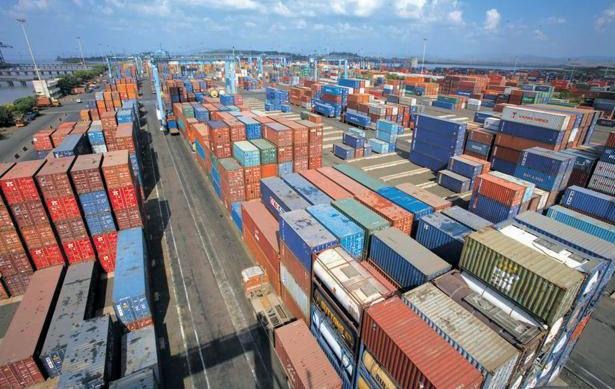
4 minute read
JNPT privatisation
BATTLE LINES FORMING
Jawaharlal Nehru Port Trust (JNPT) has one public terminal left for privatisation and it is gaining a lot of interest. AJ Keyes looks at the potential implications
The pending privatisation of the last remaining public terminal at JNPT brings with it a range of potential implications involving a number of terminal operators in this location and throughout India.
There are currently five container terminals at the port namely, Jawaharlal Nehru Port Container Terminal (JNPT), Nhava Sheva International Container Terminal (NSICT), Gateway Terminals India Pvt Ltd (GTIPL), Nhava Sheva International Gateway Terminal (NSIGT) and the newly commissioned Bharat Mumbai Container Terminals Private Ltd (BMCT).
The latest tender from the port authority to privatise JNPT is going to bring strong interest from a wide-range of potential operators, not the least of which is existing operator at the port, DP World. In addition, there are other companies looking to establish an operation at the country’s busiest import-export container gateway.
FREEDOM TO SET RATES
This process will privatise the only state-owned container terminal at the port, with the successful bidder gaining a 30-year deal including the freedom to set rates based on market forces.
The current terminals at the port collectively handle around five million TEU per annum, although as Figure 1 shows, only nominal growth (of 0.9 per cent per annum) occurred between 2010 and 2020. Indeed, 2020 was a tough year for the port as containers handled for the financial year ending March 2021 recorded a drop of seven per cent. Yet with the current port capacity at 6.3 million TEU and volumes just under 5.0 million TEU in 2020, spare capacity exists.
Therein lies part of the issue facing the port. There will not be any major increase in business, even with the privatisation process, with volumes still driven by market demand.
Yet there is no lack of interest in the outstanding tender.
DISASTROUS FOR DP WORLD
An obvious candidate is DP World, already operating NSICT and NSIGT. If it wins the tender process it will gain another 680m of berthing to offer a linear quay of 1610m, plus be able to merge its terminal storage yards to provide better scale economies.
Yet there is a downside for this company here too. Its current operating contracts end in 2028 and, at present, there are no guarantees that these arrangements will be extended, unless there is an automatic extension clause in place (which is not known). Moreover, if these facilities are also put out to tender in 2028, DP World will find itself back in another competitive process.
To add to concerns for DP World, if Terminal Investment Ltd (TIL) successfully wins the current process, then the MSC traffic, reported to be in the region of 50,000TEU to 60,000 TEU per month, will divert to the TIL facility. This traffic is generated by four weekly services calling to NSIGT, one at NSICT and one at Bharat Mumbai Container Terminals (BMCTPL-the terminal run by PSA International Pte Ltd).
Steve Wray, Technical Director, WSP Maritime Advisory explains the likely outcome. “If TIL wins this deal, then NSIGT will become virtually empty. MSC will shift all services to its own terminals. This will be disastrous for DP World.”
There are other anticipated bidders, APM Terminals (APMT) (already in a joint-venture with Container Corporation of India at GTIPL), International Cargo Terminals and Infrastructure Pvt Ltd (part of Mumbai-based JM Baxi Group), JSW Infrastructure Ltd and the fast-growing, cash rich operators from the MidEast, QTerminals of Qatar and Abu Dhabi Terminals.
WHERE IS MORE VOLUME COMING FROM?
It does raise one obvious question. Where is the required extra volume coming from to fill the new capacity, especially as BMCTPL is contractually obligated to construct another 1000m of berthing before 2024, doubling the length of quay?
At full build out of BMCT, the overall port will then offer 8.7 million TEU per annum, and with current volumes struggling to get past 5.0 million TEU. One crucial point from the new JNPT tender is that the successful bidder does not have to take all existing employees and the private entity can hire its own workforce.
Currently, there are more than 800 employees directly/ indirectly working at the container terminal, with most aged 52-55 years. A government-backed special voluntary retirement scheme (SVRS) for employees remaining open for six months from September 1, 2021 will reduce this number to help make the tender process more appealing.
While it is too early to speculate who will win the new tender for JNP it is the focus of strong interest from diverse potential bidders and behind this is pressure to bring new traffic.
8 The public-
sector operated JNPT container terminal is up for privatisation. Despite a growing imbalance between capacity and demand, interest seems strong
8 Figure 1: Container
Throughout at Port of Jawaharlal Nehru Port 2010-2020, in ‘000 TEU
Source: Dataand.com










